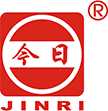How to Customize Binder Covers?
Customizing binder covers is an effective way to organize documents, personalize work materials, or enhance branding for schools, offices, and corporate presentations. A well-designed cover helps users quickly identify contents while giving the binder a polished and professional appearance. This guide explains the core steps, design considerations, and practical recommendations to help you create functional and visually appealing custom binder covers. For businesses seeking durable and customizable binder solutions, JINRI offers a wide range of high-quality binders suitable for professional and educational use.
Understanding the Purpose of a Custom Binder Cover
A custom binder cover serves both visual and practical functions. It can display a title, identify a subject or department, highlight company branding, or create a cohesive set of materials for events or classroom activities. Whether used for client presentations, training manuals, school coursework, or personal planning, a customized cover enhances clarity and organization. Before starting the design process, users should determine the cover’s main purpose, preferred layout, and the type of binder being used.
Planning the Design Layout
A strong design begins with clear structure. Many binder covers use a combination of a main title, subtitle, and space for additional notes. Users often choose visual themes that match their organization’s branding or personal preference. When preparing a design, consider alignment, margins, color balance, and readability. Minimalist layouts may suit corporate settings, while creative and colorful designs work well for school and personal binders.
You may organize the layout by focusing on the following aspects:
Title Placement
Ensure the main title is centered or positioned in a way that draws attention and remains easy to read on a shelf or desk.Spacing and Margins
Leave enough border space so the printed cover fits neatly within the binder’s transparent sleeve without cutting off text or graphics.Color Themes
Use color combinations that convey the right mood or match your brand’s palette.Visual Hierarchy
Larger fonts for titles and smaller fonts for supporting text create clarity and balance.
Choosing Materials and Printing Options
The quality of materials greatly influences the durability and appearance of customized binder covers. When printing at home, users usually rely on inkjet or laser printers along with high-quality paper. For bulk orders or premium results, professional printing services can provide sharper colors and more consistent finishes. Below is a simple comparison of common printing materials:
| Material Type | Benefits | Ideal Use |
|---|---|---|
| Standard Matte Paper | Easy to print and write on | School binders, simple labels |
| Glossy Photo Paper | High color vibrancy and smooth surface | Presentations, branding visuals |
| Heavyweight Cardstock | Strong and durable | Long-term storage binders |
| Laminated Sheets | Water-resistant and protected | Fieldwork binders, outdoor use |
Many organizations choose binders with clear overlay sleeves, making it easy to slide in printed custom covers. If long-term durability is required, laminated covers or plastic cover sheets may be preferred.
Steps for Creating a Custom Binder Cover
Customizing a binder cover typically involves a straightforward process, blending creative design and practical fitting. These steps help ensure the final result is both visually appealing and correctly sized.
1. Determine the Binder Size
Start by confirming the binder’s dimensions, including the height, width, and spine thickness. Common sizes include letter-size binders, A4 binders, and smaller planner-style models. A precise measurement ensures the cover fits perfectly without wrinkling or shifting.
2. Select Your Design Software
Users may choose professional design tools or simple word-processing software depending on familiarity and complexity. The goal is to create a clean layout with defined margins and accurate sizing.
3. Insert Text and Graphics
Add the binder title, company name, subject category, student name, or any logos needed. Visual elements should be high-resolution to avoid blur during printing. Adjust spacing to maintain harmony across the page.
4. Add Decorative Elements
Subtle shapes, background colors, borders, or icons can enhance the cover. The design should remain readable and free from excessive clutter.
5. Print and Trim
After completing the design, print it on the selected paper type. Trim any excess edges using a paper cutter to maintain clean lines.
6. Insert Into the Binder Sleeve
Slide the printed cover into the front transparent sleeve. Make sure the edges are aligned and the sheet is fully inserted without folding.
Customizing Binder Spines and Back Covers
For complete binder organization, many users also customize the spine and back cover. The spine typically includes a short title for quick identification on shelves. Back covers may include schedules, reference tables, brand information, or extra graphics. Matching front and spine designs create a unified visual system that is easy to spot in crowded storage areas.
Tips for Creating Professional-Quality Designs
Achieving a well-finished binder cover involves more than choosing good graphics. Consider these practical techniques:
Use high-contrast color combinations to enhance readability.
Keep text concise so the cover remains clean and functional.
Use vector-based graphics for crisp lines and logos.
Save designs in print-ready formats to prevent layout distortion.
If creating multiple covers, maintain a consistent theme for a professional appearance.
For organizations producing training manuals, catalogs, or corporate binders in bulk, choosing high-quality binders is essential. JINRI provides durable binder options with clear sleeves and strong construction, making them suitable for customized cover projects.
Common Issues and Practical Solutions
Custom binder covers usually fit without difficulty, but a few issues may occur during printing or insertion:
Misalignment after printing
Check margin settings and ensure the page size matches the binder dimensions.Blurry images
Replace low-resolution graphics with higher-resolution files before printing.Difficulty inserting the cover into the binder sleeve
Trim 1–2 millimeters from the page edge for smoother insertion.Color inconsistencies
Calibrate your printer settings or switch to a higher-quality paper type.
Conclusion
Customizing binder covers enhances organization, improves presentation value, and allows users to personalize their materials. Whether designing for school, office, or professional documentation, a thoughtful layout and high-quality materials can significantly improve the final result. For users seeking durable binders that pair perfectly with their customized covers, JINRI offers practical and reliable binder products designed for flexibility and long-term performance.



